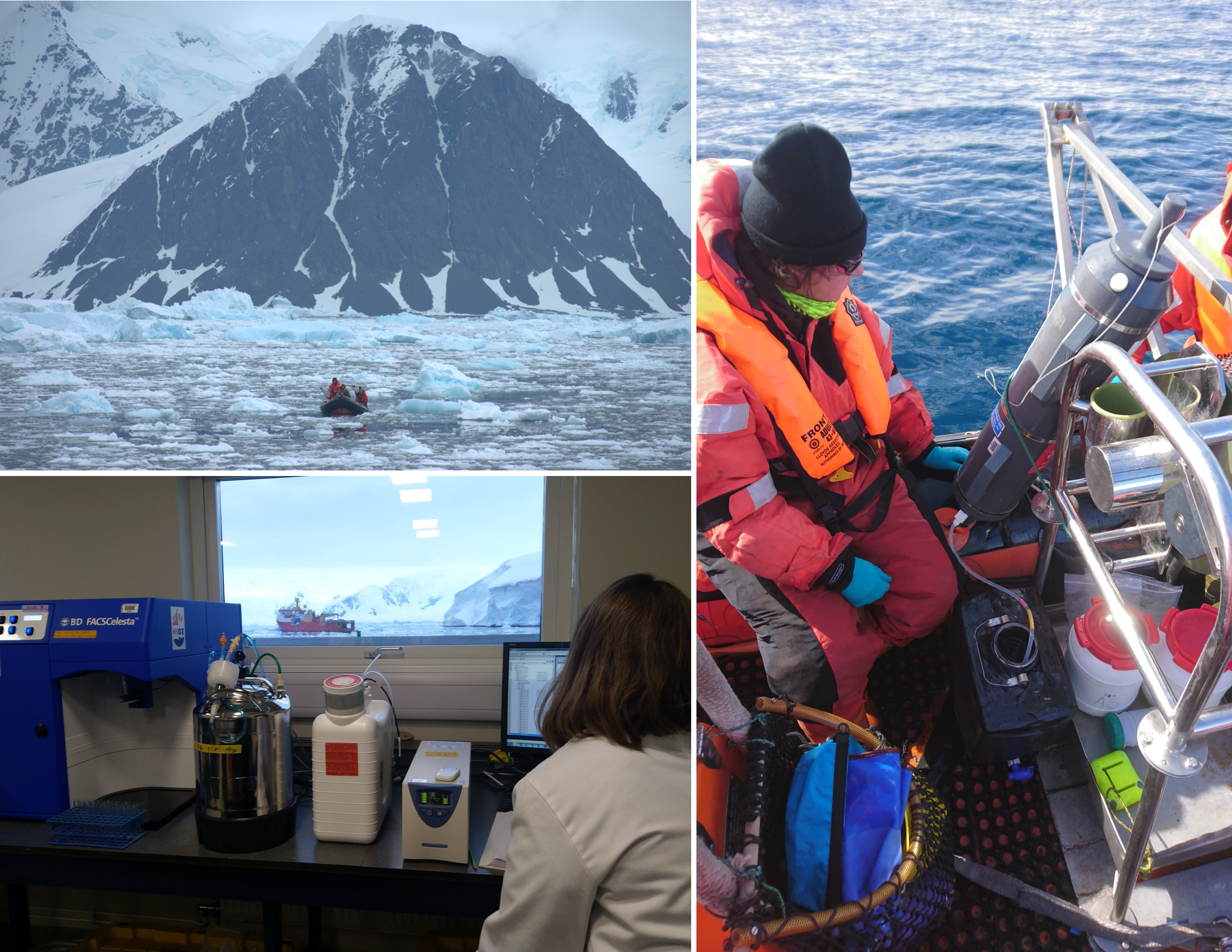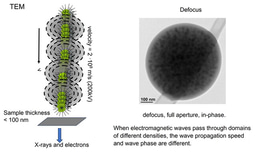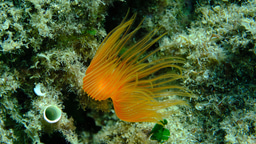Unveiling the Hidden World of Antarctic Marine Viruses
Published in Ecology & Evolution and Microbiology

The Antarctic evokes images of vast icy landscapes and charismatic penguins going about their day. Unseen, beneath cold waters lies a vibrant world dominated by microbes. These microorganisms, especially algae, form the foundation of the Antarctic food web, making life possible in this frizzing environment. Here, viruses play a critical role in maintaining the balance of the ocean’s ecosystem. By killing their hosts, such as algae and bacteria, viruses release nutrients back into the ecosystem, making them available for other (micro)organisms, fuelling the “microbial loop”, a crucial part of the ocean's nutrient cycle.
Previous research from the Brussaard group focused on quantifying the abundance and virus lysis rate of microbes in the Southern Ocean [1-5], revealing their importance as agents of microbial mortality. Yet, despite the Southern Ocean’s significance to global ecosystems and its role as a major carbon sink, it remains one of the most underexplored regions regarding viral metagenomics [6], meaning the identity of these viruses remained largely unknown.
Fieldwork in the Frozen Frontier
The project Polar marine viral diversity and dynamics “POMVIDDY”, supervised by Prof. Corina Brussaard and Prof. Bas E. Dutilh, embarked on a sampling campaign focused on understanding virus-host interactions in Antarctic marine waters. This multifaceted project aims to quantify microbial diversity, abundance, and death rates due to lytic viral infections. Over the course of a year-long fieldwork effort, in collaboration with the British Antarctic Survey (BAS), we collected samples at the Rothera Time Series long-term monitoring site. This fieldwork was essential in gathering data across the entire productive season. We were fortunate to sample from early November through late April, which made this study’s dataset particularly special, as it allowed us to capture both pre- and post-peak productive season dynamics in microbial and viral communities.
The fieldwork was a true team effort, led by Ella Wesdorp, who oversaw much of the sampling. I had the privilege of joining for two and a half months in 2019 during the peak of the productive season, and it was an unforgettable opportunity. Experiencing the harsh conditions required to collect samples gave me a deeper appreciation for the effort behind each dataset. It also provided a firsthand experience of this beautiful ecosystem, providing a unique perspective on how the weather and the surrounding environment influence the data we later analyzed. Joining the field campaigns is an invaluable advantage for early-career researchers, strengthening the connection to the research and allowing us a voice on how data is collected from the onset, an essential part of scientific training.

The Role of Collaboration
Fieldwork, however, was only the beginning. Once the samples were back in the lab and the DNA extracted, began the challenge of analyzing the data. The viral sequences we uncovered were unlike anything we had seen before. Many were so novel that we struggled to predict what types of viruses they were and what they infected. While some were recognizable as phages or giant viruses, many remain mysterious, underscoring the ongoing nature of the work of cataloging the Planet’s viral diversity.
In making sense of the data spanning such diverse viral groups, scientific collaboration became essential. We discussed our work at countless scientific meetings, receiving feedback and insight from experts across the world. These collaborations helped shape the final paper, bringing together diverse perspectives to analyze the viral community from multiple angles. Input from researchers specializing in different types of viruses, such as giant viruses, Polinton-like viruses, virophages, and crAssphages, creates a more complete (and complex) picture of the Antarctic viral diversity.
Moving Forward
In many ways, this project represents the best of what science has to offer, a blend of exploration, collaboration, and the excitement of uncovering the unknown. Our study adds several vital pieces to the puzzle of Antarctic marine microbial ecology, shedding light on the crucial role viruses play in the ocean's ecosystem, including the discovery of new viral families. By lifting the veil on Antarctic viral diversity we’ve only begun to reveal the complexity of this hidden world. We look forward to further research that continues to catalog the diversity of marine viruses and uncovers their broader impact on Earth's systems.
[1] Biggs, Tristan EG, et al. " Temperature induced changes in the relevance of viral lysis and microzooplankton grazing of Antarctic phytoplankton indicates future alterations in seasonal carbon flow" FEMS Microbiology Ecology (2024): in press
Follow the Topic
-
Nature Communications

An open access, multidisciplinary journal dedicated to publishing high-quality research in all areas of the biological, health, physical, chemical and Earth sciences.
Related Collections
With Collections, you can get published faster and increase your visibility.
Women's Health
Publishing Model: Hybrid
Deadline: Ongoing
Reproductive Health
Publishing Model: Hybrid
Deadline: Mar 30, 2026





Please sign in or register for FREE
If you are a registered user on Research Communities by Springer Nature, please sign in